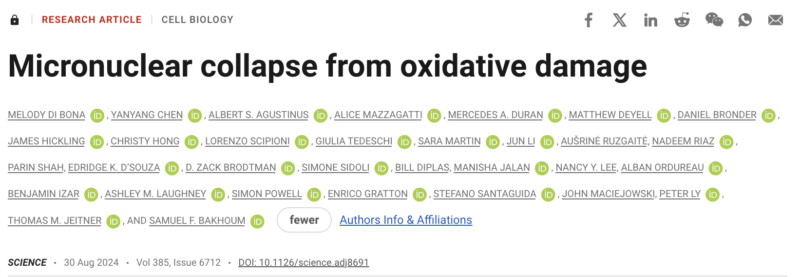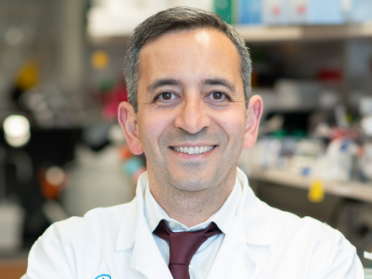Samuel Bakhoum, Associate Member (Professor) in HOPP and Radiation Oncology, Memorial Sloan Kettering Cancer Center, shared a post on X:
“Our paper on the role of mitochondria and free radicals in promoting the collapse of cancer micronuclei is out in Science Magazine today. A story led by the brilliant Melody Di Bona it started with a simple question: why do micronuclei rupture?
Melody observed that micronuclei that are enmeshed in the mitochondrial network were more likely to rupture. In fact, by live-cell imaging she found that those that didn’t overlaps with the mitochondria never rupture.
It turns out reactive oxygen species ROS were the culprit! They disrupted the export of a protein called CHMP7 that is normally involved in nuclear envelope repair. However, in the presence of ROS CHMP7 accumulates in micronuclei and destabilizes them.
Why is this important? Because micronuclear rupture has been shown to lead to genomic rearrangements chromothripsis ecDNA formation epigenetic changes and inflammatory signaling as recently reviewed by Melody Di Bona in Cancer Discovery.
So how does CHMP7 accumulation lead to micronuclear collapse? Through cysteine oxidation, aggregation and its binding to LEMD2 under high ROS conditions this leads to physical deformation of the micronuclear envelope.
Interestingly, using genetic knockout and add-back, we found that this specific mechanism is necessary and sufficient to mediate micronuclear rupture and collapse under hypoxia moreover human tumors that are hypoxic have significantly higher rates of micronuclear rupture.
To me this is exciting because it mechanistically links tumor hypoxia with many of the consequences of micronuclear rupture such as chromosomal rearrangements, epigenetic changes, and inflammation.
Why don’t micronuclei repair their envelopes? A back to back paper by a great colleague Stefano Santaguida shows that ROS – through cysteine oxidation – enables p62 to degrade functional components of the ESCRT III membrane repair complex.
This double punch landed by ROS which includes inducing rupture while inhibiting repair was very nicely summarized by Carmine Settembre and Marianna Maddaluno.
We’d like to truly thank all collaborators, funding sources – The Mark Foundation for Cancer Research, Burroughs Wellcome Fund, Pershing Square Sohn Cancer Research, National Cancer Institute, CDMRP for their support.
Finally, a shameless plug for Melody Di Bona who is now on the job market – she is extremely talented, rigorous and tenacious interdisciplinary scientist. Any department would be lucky to have her.”
Micronuclear collapse from oxidative damage
Authors: Melody Di Bona, et al.

Source: Samuel Bakhoum/X






